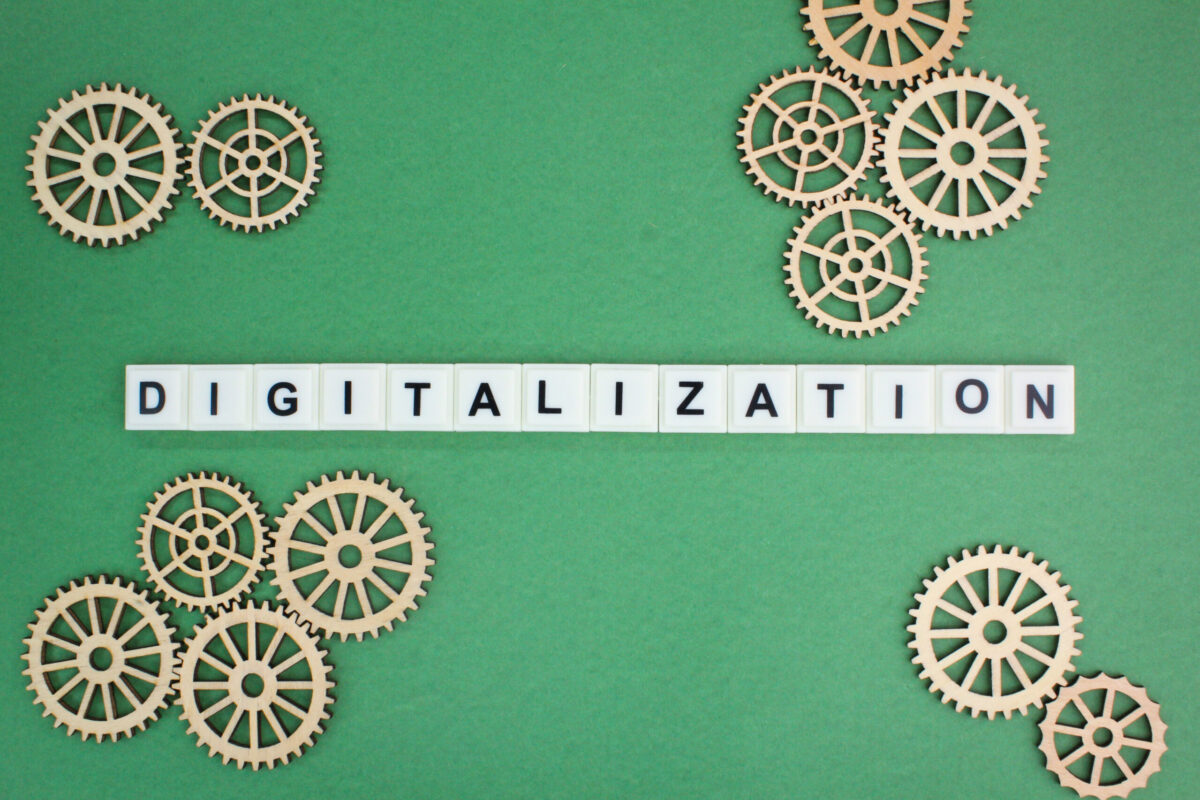In the past few months, we have all been aware of how quickly life, and work, can change. It’s not just about the fact that the vast majority of professional roles can be and are being carried out from home. The pandemic has accelerated change by years across the board – whether that’s how we work, educate or consume.
We are moving beyond a “new normal” – work and life in general looks very different to what once was. The future is much closer at hand, and it is no longer a big leap to transform at any scale.
So, what does that mean for your business’ IT? The innovation we will see in 2020 and beyond is more than just digitalisation. Let’s explore the emerging trends that will take us all to the next level.
The digital role evolution
In the UK, 24% of the workforce (around 7.6 million jobs) are at risk: whether through permanent layoffs, temporary furloughs or reductions in hours and pay.[1] Lockdown has importantly saved lives, but essential sectors such as hospitality, tourism, retail and food have been hit hard and this disruption has raised questions on the viability of certain jobs during the pandemic and into the post-COVID-19 world.
New forms of jobs, new skills and new ways of working are already emerging. Job profiles are having to shift to meet new expectations – whether that’s from the employee, employer or even end-user/consumer. For example, within retail, customer services have had to adapt to not only providing in-person support, but also to help customers shop more effectively online and via technology. This could include helping consumers with online purchases, explaining how it works, and even dealing with minor technical glitches along the way. Certainly, sales and customer service roles will be more encompassing going forwards.
This is where additional customer support will come into its own – for providing solutions to pivoting businesses, providing back-up to potentially overwhelmed customers and employees alike, and providing the necessary bridge across the skills gap.
Transforming the partnership model
We all need to recognise what works: even if that means changing the status quo. Along with roles adapting, or being made redundant, there is also the opportunity for temporary bridges to be built. There will be a rise in skilled individuals going freelance or building a portfolio career to ensure they have a diverse stream of income. Even before lockdown, studies predicted that 50% of developed country workforces would be gig workers by 2030[2].
Employers and business leaders have the opportunity to gain talent on a “pay as you go” model, by partnering with an experienced IT services company to meet short-term needs as well as to support long-term goals. Shared employment models are also emerging, and that also allows for portfolio careers to develop: people with similar skills can and will be employed by multiple employers.
Whether you’re working with individuals, or outsourcing on a larger scale to technology solutions providers such as Allied Worldwide, it is important to start with and maintain a partnership by making sure the technology solutions provider understands your business goals and can help you reach them.
Education from the top down
Working with outsourced teams can ensure your business matches the quickly changing environment, and it’s important to remember that the demand for digital skills will only increase. Existing and future roles will need to adapt: the world has no option but to become more digitally literate. More contactless, automated and paperless solutions are already being developed and adopted.
This is something that goes beyond the workplace. Whilst low adaptability is a reality for our current workforce, it won’t be for generations to come. Understanding the risks is something that should be, and is being, introduced to children and young adults entering the working world. Schools are responsible for ensuring digital skills move beyond the innate abilities: whether that’s for digital content creation and coding, or data analytics, AI modelling and developing machine learning.
Education is an area that is growing for technology solutions providers. For employees right now, it’s about making the most of the tools we have to hand, and educating from the top down on how to maintain a secure environment whilst working remotely. This sounds so simple, but by training your teams to recognise and mitigate risk provides a solution to a large part of the cybersecurity challenges.
Pivoting cyber-securely
Cybersecurity has never been more important: during the pandemic, there have been widely reported threat campaigns to disrupt businesses. This isn’t going to stop as lockdown measures are eased. Not only do we need to ensure our workforces are educated, we also have to respect the acceleration from bricks and mortar to online.
The boom in online retail, whether that’s for the small shop owner or the national retailer, has meant that we have moved adoption forward 4-6 years[3]. Consider that for a moment. What would have taken a half a decade, has now taken place in three months. That means that our consumption needs to be made more secure, our transfer of funds, data and end products need to be protected. On top of that, logistics has changed so much that it’s not just about ensuring cargo reaches Point B from Point A, but also to ensure there is no digital disruption to the supply chain.
This also goes beyond retail and logistics. Online offerings are more everyday for most industries, and carrying out your business securely is a responsibility that all leaders need to consider – for themselves, their teams and their customers. Having an IT provider as a partner who understands your business and can support you as your business develops to circumnavigate the unknown will enable you to move forward, no matter what you have to face next.
Health and safety: no matter where
We know the figures – there have been a lot of working from home, and what once was a privilege is now a necessity. Not only will outsourcing be required to ensure your technologies meet your needs, health and safety will need to expand to meet your team’s requirements.
Of course, there are those sectors who will require onsite teams no matter what the future holds – manufacturing, medicine, and more. There may be a change towards working more locally to avoid public transport: going back in a way, to the time where industry workers lived close to their factories or had settlements nearer the workplace.
We are all adapting to new ways of working. Our engineers find temperature checks to be the new norm when visiting client sites. Technology is being developed to even meet these needs – one example is our digital hand sanitisers which can provide contactless entry to the workplace, track and trace throughout the building and even scan your temperature. Not only do these kinds of technologies provide a safer working environment, there is further upskill and job creation opportunities to make the most of.
We know that this is an ever-changing situation, and new technologies, ways of working and outsourcing practices will continue to emerge. Making the most of the tools available, whilst continuing to grow your business safely and securely, will be the next steps. Allied Worldwide has over 25 years’ experience of helping customers harness IT infrastructure globally to achieve their goals. For more information please get in touch, we’re always happy to help.
[1] McKinsey, COVID-19 in the United Kingdom: Assessing jobs at risk and the impact on people and places
[2] OECD, Future of Work
[3] Forbes, COVID-19 Accelerated E-Commerce Growth ‘4 To 6 Years’




